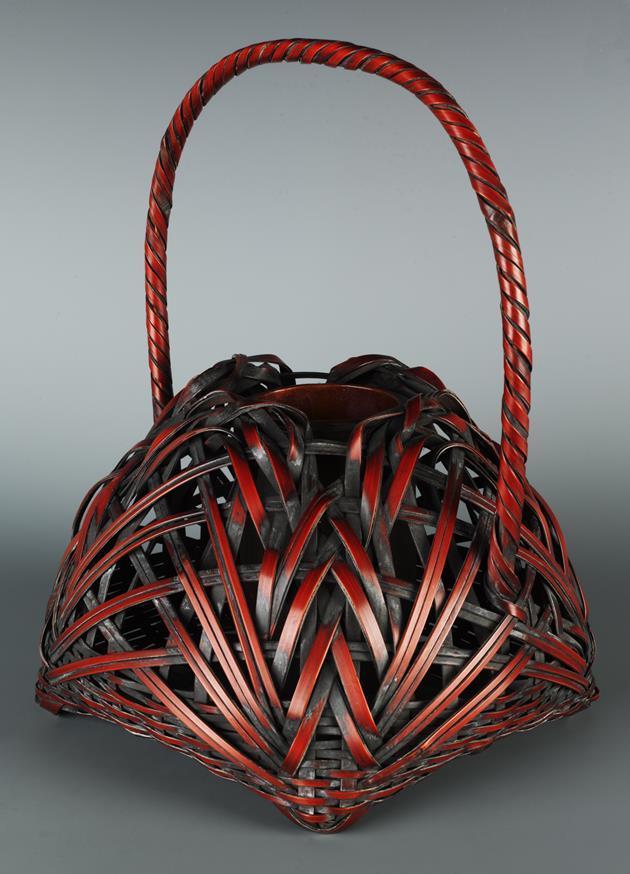Basket
20th century
Japanese basketry is an ancient craft form dating back some 2000 years. To a large extent, bamboo was an obvious material. Bamboo groves were (and still are) found in abundance across the country; the material itself is light, strong and fairly pliable, making it naturally suited to weaving. The earliest baskets were humble utilitarian vessels, used for storage and as portable containers. In the 16th century, however, the Japanese tea ceremony (chanoyu) - and its attendant rituals like ikebana (flower arranging) - became formalized within the literati class. Consequently, the baskets used for ikebana and the tea ceremony, known as hanakago, became part of the aesthetics of chanoyu, elevating these humble ware to objects of artistic interest. In the early part of the 20th century, the mingei (folk art) movement led to a revival of interest in traditional Japanese crafts. Along with this, bamboo basketry came to be seen as more than “mere” craft; it was now a prestigious art form embodying a distinctly Japanese aesthetic identity. It is worth noting that geometric patterns on Japanese baskets are correspondingly found on textile, ceramic, and lacquerware designs, testament to a common aesthetic sensibility amongst the respective practitioners. Japanese bamboo baskets have been the subject of major exhibitions in recent years, such as the ones at the Museum of Fine Arts, Boston (2006) and at the San Francisco Asian Art Museum (2007), which owns the renowned Cotsen collection of more than 900 baskets.
The baskets from the Fallick collection (2013.18.1-20) date from the early to late 20th century, and are each unique in texture, form, plaiting and even coloration. This example bears the signature of its maker, Maeno Koyo, an artist renowned even amongst his peers for his technical finesse and the speed with which he worked.
Bamboo
12 × 9 × 9in. (30.5 × 22.9 × 22.9cm)
Gift of Esther Rose Fallick
2013.18.15
Photo: Elizabeth Mann


